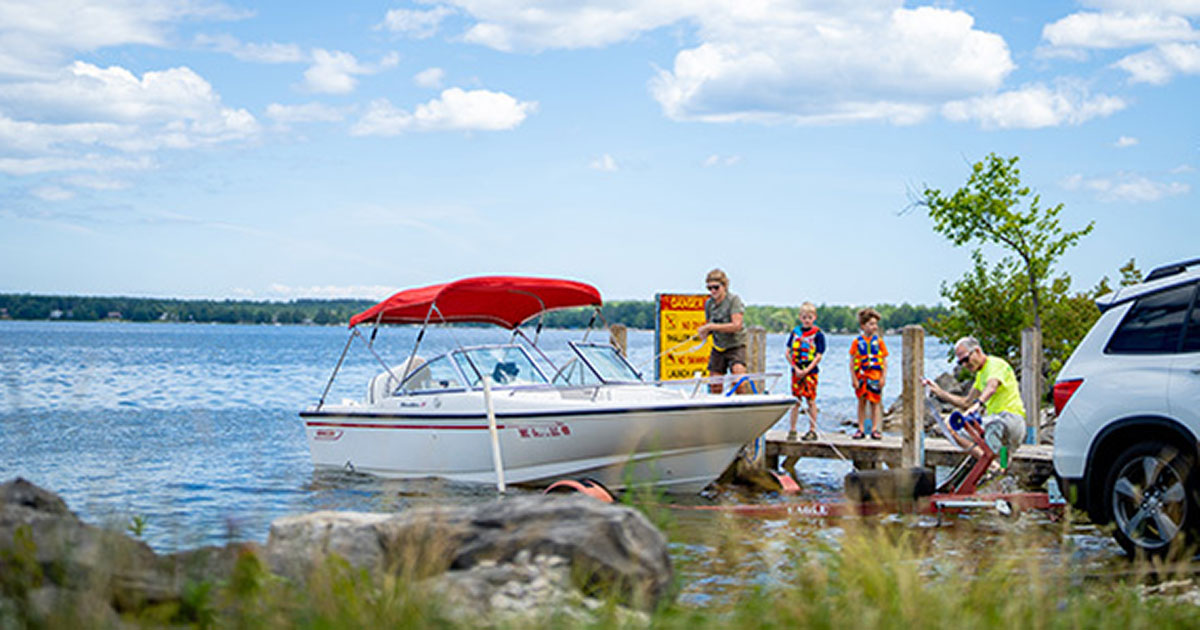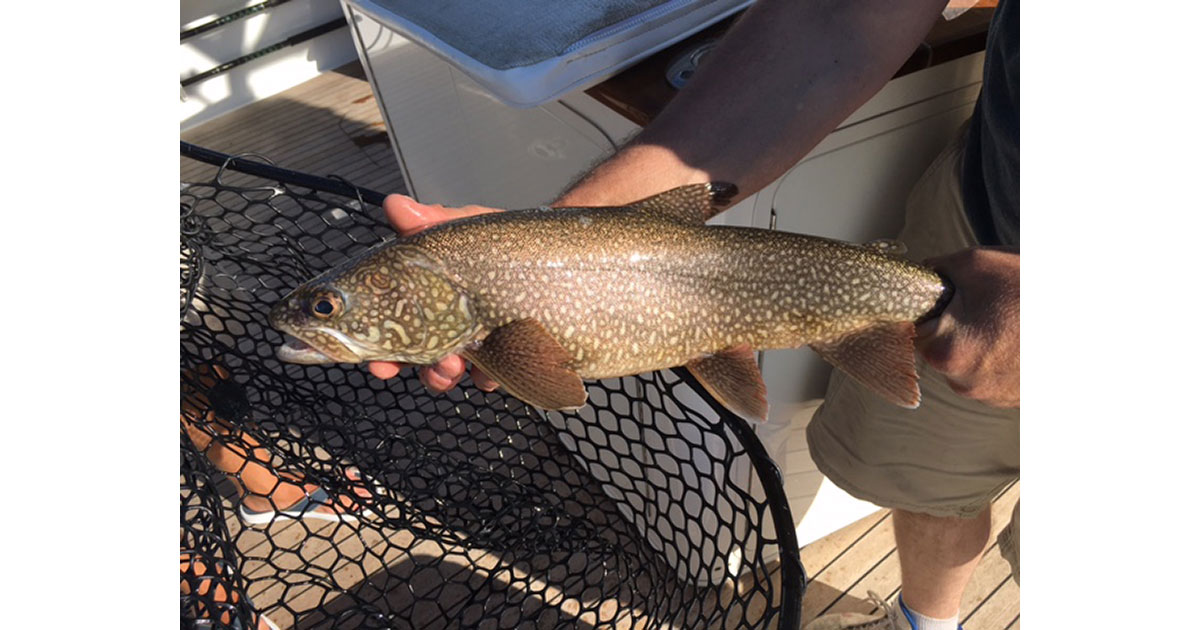- Details
MDNR Report

The Michigan DNR is offering up to $1.5 million in Fisheries Habitat Grants to local, state, federal and tribal governments and nonprofit groups. This funding is available for activities that can improve Michigan’s fisheries and aquatic resources, such as fish habitat conservation, dam removal and repair, and resource assessment studies.
Fisheries Habitat Grants are available through an open, competitive process, and preproposals are being accepted now through Nov. 19.
“Healthy rivers, lakes and wetlands are essential to support fishing, boating and other enjoyment of our state’s natural resources,” said Joe Nohner, DNR fisheries resource analyst. “These grants help our partners protect and rehabilitate fisheries and aquatic ecosystems in Michigan, where these resources are vital to recreation and local economies. In cases where we remove, repair or renovate dams, we also can improve public safety for residents and visitors.”
Grant guidelines
Fisheries Habitat Grants are available for projects that fit one of two themes: aquatic habitat conservation or dam management. Grant applicants, if eligible, may apply for and receive funding from both themes with one application.
Applicants may request support from the current funding cycle or a conditional commitment from a future year’s funding. Conditional commitments to competitive projects allow recipients to leverage DNR contributions toward their applications for additional funding sources or to secure a Fisheries Habitat Grant funding commitment based on other conditions.
Expected funding is derived from two sources:
- Up to $1,184,000 from the state’s Game and Fish Protection Fund, supporting the aquatic habitat conservation theme.
- $350,000 from the state’s General Fund, supporting the dam management theme.
Grant amounts range from a minimum of $25,000 to the total amount of funding available in all eligible theme areas. If necessary, smaller projects within the same region addressing similar issues can be bundled into a single grant proposal package to reach the minimum grant amount.
- Details

Got an opinion about Michigan launch sites and other public amenities?
Michigan is conducting an online survey to help understand what services and infrastructure are most important to you.
Your answers will help guide how Waterways funds (monies raised by boat registration fees and a portion of the state gas tax) are invested for future generations.
This is a chance to sound off about ramp qualities, parking and even power loading. The link is listed below.
We're asking for your input on facility upgrades, such as enhanced parking, more launch piers, convenient in-and-out services and other possible investments at boating access sites.
Make your voice heard by taking a few minutes to complete this online survey.
- Details
MDNR Report

Genesee is now the 16th Michigan county where chronic wasting disease has been identified in the wild deer population, according to the Michigan DNR. An adult doe found acting ill in Gaines Township recently tested positive for the disease.
The CWD finding was confirmed by the Michigan State University Veterinary Diagnostic Laboratory, which works with the DNR to identify CWD in Michigan’s wild deer herd. The sample will be sent to the U.S. Department of Agriculture’s National Veterinary Services Laboratory in Ames, Iowa for secondary confirmation.
CWD is a fatal neurological disease that affects white-tailed deer, elk and moose. To date, the disease has also been detected in the following Michigan counties: Clinton, Dickinson, Eaton, Gratiot, Hillsdale, Ingham, Ionia, Isabella, Jackson, Kent, Mecosta, Midland, Montcalm, Ogemaw and Washtenaw.
CWD is a chronic, slow-developing disease that spreads slowly across the landscape. It can be present in new areas at very low levels, making it difficult to detect. Genesee County was under focused CWD surveillance in 2022, when approximately 300 deer were tested, with none testing positive. The DNR has continued to test deer that appear sick in Genesee County when possible.
The 2.5-year-old doe that tested positive was reported as very skinny and drinking continuously, and walked directly up to a conservation officer who responded to a public report. Public reporting of sick acting deer is one of the best tools available to the DNR for identifying CWD that may exist at low prevalence in previously undetected areas.
“We appreciate the support and cooperation of the public as they continue to report sick deer so our team can follow up with the necessary testing for confirmation,” said Brent Rudolph, DNR deer, elk and moose management specialist. “Though many reported deer turn out not to be infected, the care that’s demonstrated when people take the time to share their observations is a critical contribution to our disease-testing efforts.”
Deer that appear lethargic, disoriented, lame or unresponsive are good candidates for CWD testing, though these symptoms are characteristic of deer affected by other maladies or injuries as well. The public is encouraged to report sick deer at Michigan.gov/EyesInTheField.
The DNR’s work with researchers and hunters to detect and slow the spread of CWD is possible because of limited general fund dollars allocated by the Michigan state Legislature.
- Details
MDNR Report

As anglers, swimmers and other water recreation fans flocked to Michigan lakes and streams during the summer, some may catch a glimpse of a common, though rarely seen invertebrate known as the freshwater jellyfish. Don’t be concerned though — these jellyfish are not harmful to humans and are believed to have negligible adverse effects on the aquatic environment.
Freshwater jellyfish (Craspedacusta sowerbyi) are related to the various marine species of jellyfish, but in essence are not true jellyfish since they have a membrane called a velum that the marine species do not. Despite this difference, the appearance and movement of freshwater jellyfish mimic those of a true jellyfish. They are not native to Michigan or even North America and are believed to be native to China and Asia. However, this species has been found throughout most of North America for well over a century and is considered to be a nonharmful member of our aquatic communities, and certainly an intriguing one.
The first documentation of freshwater jellyfish in Michigan occurred in 1933 from the Huron River in southeast Michigan. Today, they can be found in most Michigan lakes and streams, and are most frequently spotted in lakes in the late summer and early fall.
Freshwater jellyfish are polymorphic, meaning that there are multiple forms of the same entity within a population.
The jellyfish life cycle includes the following steps:
- The jellyfish spend winter in bodies of water in a podocyst resting stage.
- As conditions become more favorable, such as during spring, the podocysts develop into polyps and continue the life cycle with asexual reproduction.
- By late summer, polyps develop into the medusa stage, which most resembles a free-swimming jellyfish. Jellyfish in this stage take an umbrella-shaped form and can range in size from a penny to a quarter. This is the life stage that is visible to the human eye and often observed during late summer.
"These are the sightings that often trigger calls to local DNR offices from curious spotters who have caught the rare glimpse of the invertebrate," said Tim Cwalinski, the DNR's northern Lake Huron manager. "Though freshwater jellyfish do have stinging cells like the marine species, their tiny size means they lack the ability to sting, and so they're not harmful to people. It is also believed to be unlikely that freshwater jellyfish could consume enough zooplankton in our bodies of water to negatively compete with fish species."
Cwalinski said that we generally think our waterways are inhabited only by fish, aquatic plants, waterfowl and various invertebrates. However, there is an entire other spectrum of life under the surface, such as plankton, bryozoans and jellyfish.
"If you're among those to observe a single medusa stage or colony of freshwater jellyfish this year in our lakes or slow-moving streams, consider yourself fortunate, don't panic, and understand this is simply an invertebrate that has inhabited most of our waterways for a century."
- Details
By SHAWN SITAR, Fisheries research biologist
Michigan Department of Natural Resources

The oldest known lake trout in the Great Lakes, 62 years old at the time of capture, was recently documented by researchers at the Michigan DNR Marquette Fisheries Research Station.
This fish was collected from Klondike Reef in Lake Superior in the fall of 2023 by a team of intrepid researchers from the DNR, U.S. Fish and Wildlife Service, University of Wisconsin-Milwaukee and Purdue University.
Age is one of most important variables in tracking population health for fish, and this finding indicates that lake trout indeed live long and prosper in Lake Superior.
In March 2024, Dan Traynor, fisheries technician at the Marquette Fisheries Research Station, was working in the lab, processing samples collected in September 2023 at Klondike Reef, a remote offshore area near the Canadian border, 40 miles north of Grand Marais.
Traynor, one of the few experts on the age assessment of lake trout in North America, assigned the age of a humper lake trout collected during the survey. Humper lake trout are one subspecies of the fish found in offshore lake mounts in Lake Superior. They are slow-growing and don’t get very large because they mostly feed on invertebrates.
The fish was female, weighed 2.1 kilograms (4.62 pounds) and was 627 millimeters (24.7 inches) in length. These stats aren’t remarkable – the longest collected by the Marquette Fisheries Research Station was 1,350 millimeters (53.1 inches) and the heaviest collected was 16.1 kilograms (35.5 pounds). The state record for Michigan is 61.5 pounds.
What was remarkable was the lake trout’s age, estimated to be 62 years old – the oldest documented lake trout in the Great Lakes.
This fish, that DNR staff has named “Mary Catherine,” hatched in 1961 (Mary was one of the most common names for babies born that year). When Grandma Mary Catherine hatched, the U.S. president was John F. Kennedy and Yuri Gagarin was the first human to go into outer space.
If fish went to school (high school that is, not just schools of fish), she would have graduated from Klondike Reef High School in the same year as Meg Ryan, Princess Diana and Barack Obama reached that milestone.
Age can be measured in fish with multiple body structures, such as spines. For lake trout, the otolith, or ear stone, is the most reliable indicator of age. The otolith is in the inner ear – humans have them, too – and as the fish grows, so does the otolith.
This growth leaves rings each winter, similar to tree rings, which can then be counted to estimate the fish’s age.


